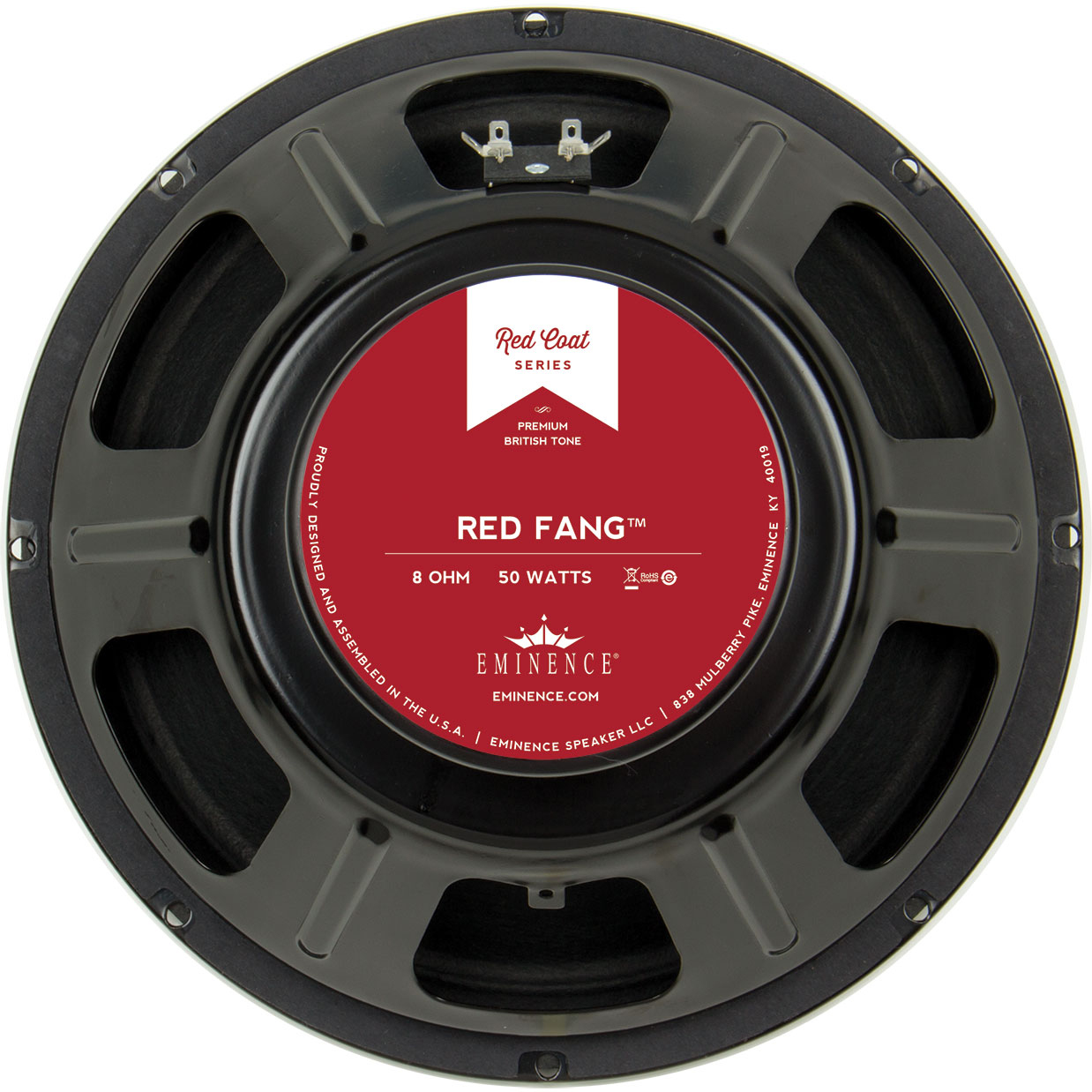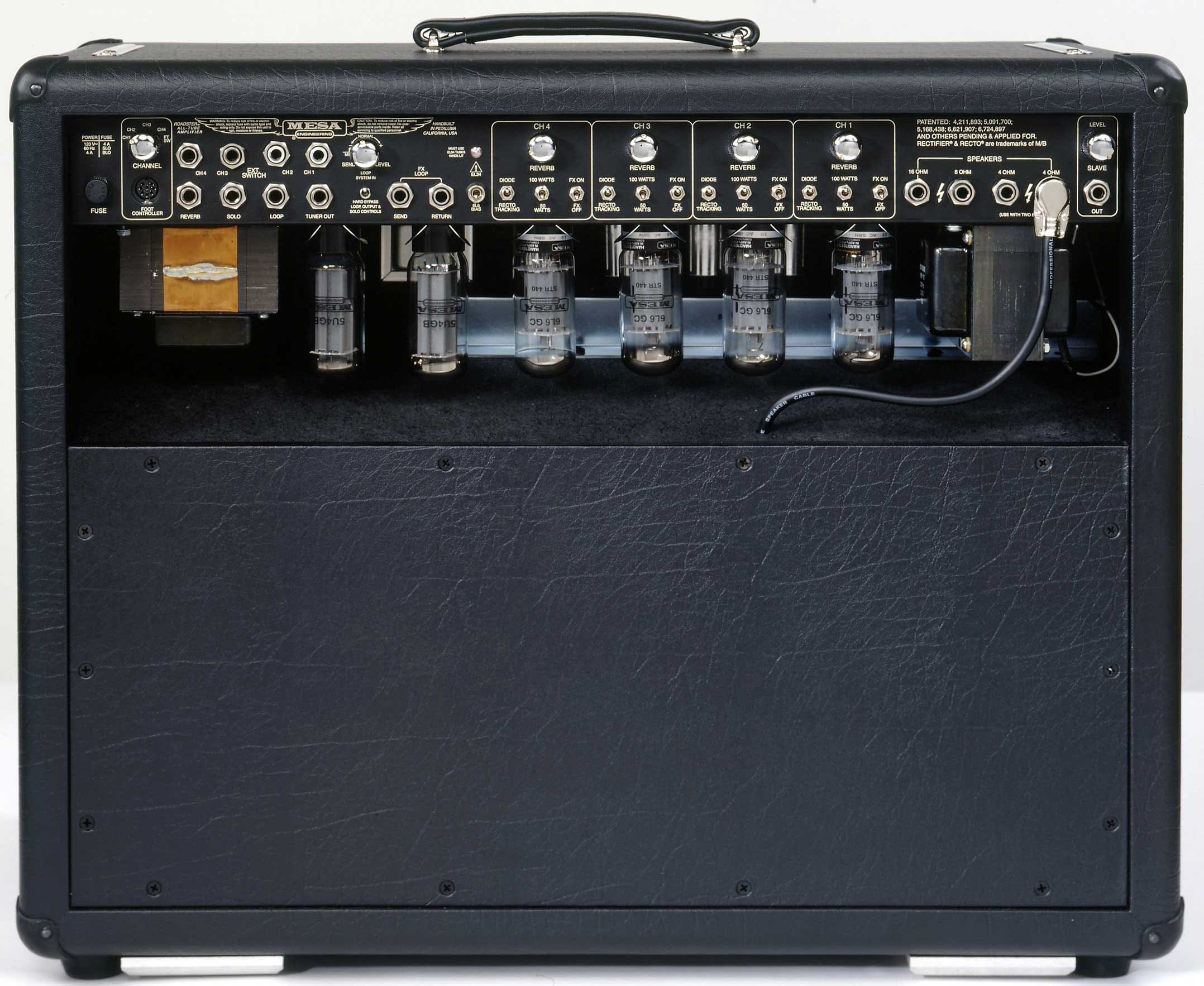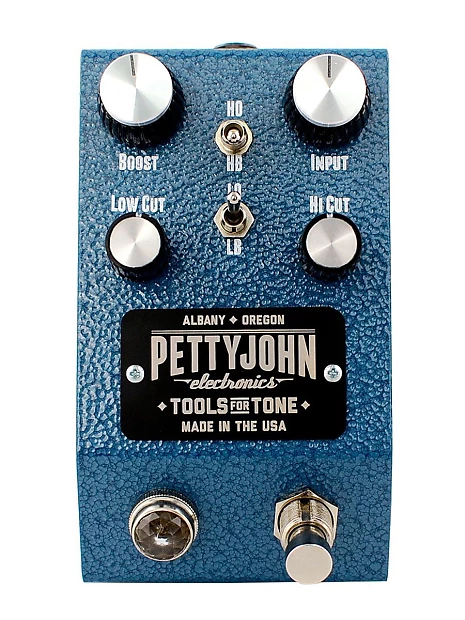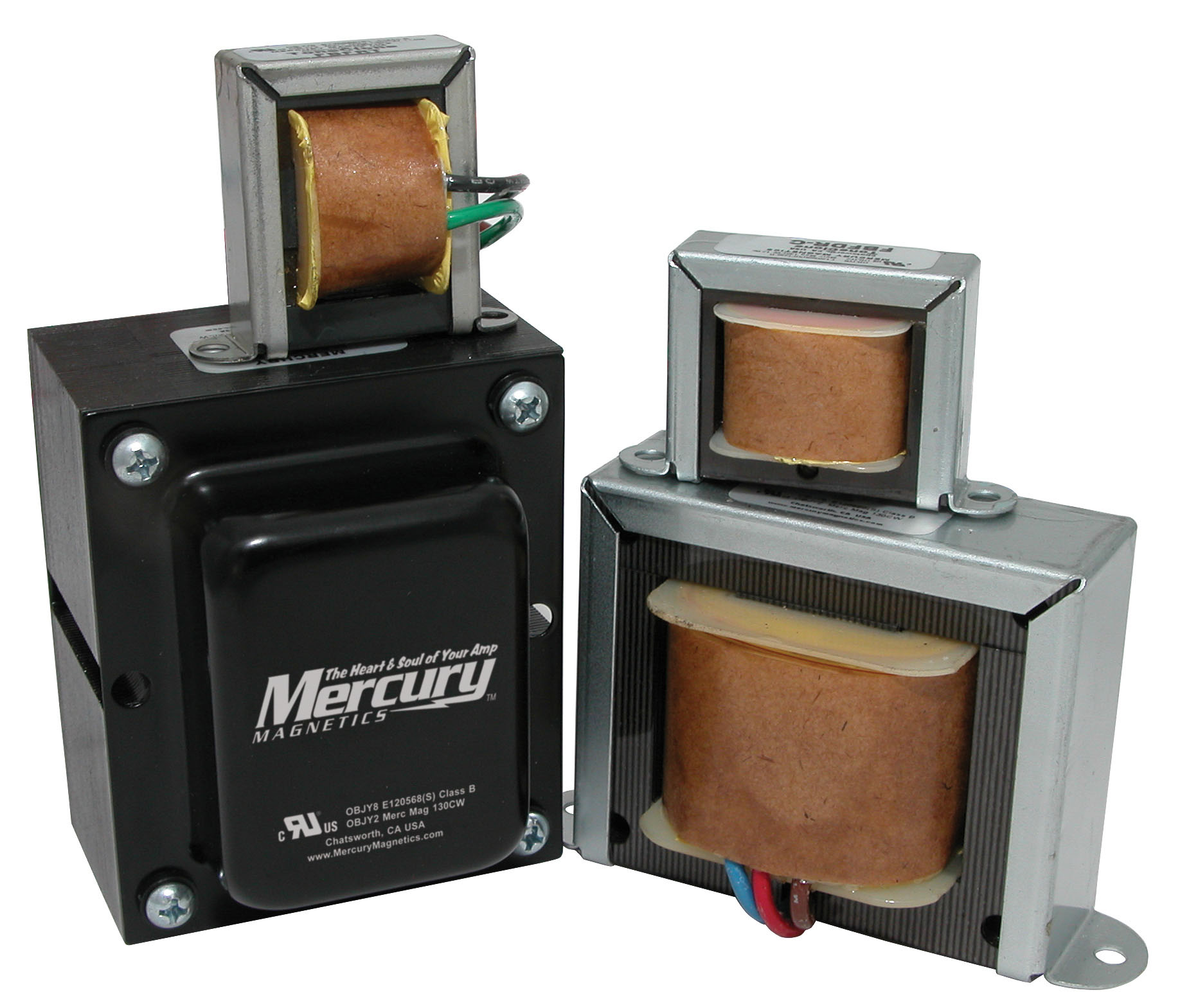Small combos are the workhorses of the guitar amp world. They are highly portable, plenty loud enough for nearly every scenario, and have tonal characteristics that work well for most musical styles. Whether for economic or practical reasons a small combo is the only amp that many guitar players own, using the same one for woodshedding, rehearsals, live gigs, and studio work, all activities that combo amps excel at. Powerful and efficient modern PA systems have made small combos even more versatile, as even the biggest arena rockers no longer have any practical need for the towering stacks of guitar amplification that roared mightily from the stages of yesteryear. Just grab a 1x12 combo amp, crank it to the sweet spot, and put a microphone in front of it. The PA will take care of the rest.
Despite the combo amp's incredible versatility and usefulness, it is not quite perfect for every situation. For louder and more raucous styles of music like metal, punk, and hardcore (and the approximately 167,261 sub-genres that descend from them) a small combo amp can feel under-powered, especially when a hard-hitting drummer is flailing away on a giant kit three feet behind it. These styles all but require a room-filling wall of guitar noise emanating from the stage, and a small amp just can't do the job much of the time. Also, a lot of aggressive guitar music is still played in basements, VFW halls, and other non-traditional venues. These places rarely have a full PA system on hand, so if your guitar amp doesn't have the juice to hang with the rest of the band, you're hosed.
For those of us who are devout combo amp lovers, but also have occasion now-and-then to need a little more volume to rise above the din, there are various modifications and additions that we can use to make our small amps sound louder (and just to be clear, I'm referring primarily to perceived volume, rather than volume as measured with a decibel meter, which is a whole different thing). Many of these are quite easy and inexpensive DIY modifications, while others will require some cash and the knowledge and advice of a professional tech to properly implement. In any case, getting a few extra decibels out of a small combo amp can make all the difference on stage or at rehearsals, and it can often be done with a minimal investment of time and money.
Swap Speakers

I will address speakers first, because for most combo amplifiers this is going to not only be the easiest upgrade to make, but also the most dramatic. A simple speaker swap can cost well under a hundred bucks, you can do it yourself in just a few minutes with no special tools, and you can often come close to doubling the perceived volume of the amplifier. The fact is that many off-the-shelf, mass-produced combo amps (and even some boutique ones) come outfitted with relatively inefficient speakers. And when I say "inefficient," I'm not referring to the speaker's wattage handling capabilities (which is a better indicator of how quick it will break up rather than how loud it will be), but to its sensitivity rating, a number that indicates how efficiently a particular speaker converts wattage into volume. Higher sensitivity ratings equal more volume given the same amplifier power, sometimes a lot more.
Sensitivity ratings can usually be found on the speaker manufacturer's website or in the owner's manual, and they are measured in decibels. For example, the current Celestion G12M Greenback is rated at 98dB according to Celestion's website, which is a pretty standard, middle-of-the-road sensitivity rating typical of many guitar speakers (I should note here that sensitivity ratings are not indicators of the quality or tone of a speaker, only its measured efficiency). We can contrast this with something like the Celestion Blue, which is rated at a robust 100dB, or the Red Fang 12 from Eminence, which is rated at a whopping 102.5 dB. These may not seem like large differences to the uninitiated, but in the real world the 4.5 dB difference between the Greenback and the Red Fang is huge, translating to roughly a 50 percent increase in perceived volume.
Of course, volume isn't everything. Many players might prefer the tonal qualities of a less efficient vintage speaker, but in general speaker efficiency seems to be increasing across the industry, so very loud speakers in various vintage and modern flavors are becoming much easier to find. Eminence, in particular, seems to be at the forefront of the speaker efficiency game, with quite a few of the transducers in its popular Patriot and Redcoat ranges measuring at well above 100dB sensitivity, with several approaching a positively frightening 103dB. Putting one of these monsters in something like a stock Fender Blues Jr. can make a formerly modest combo amp shockingly loud and very giggable.
Cabinet mods and additions

Speaker choice has a significant influence on amp volume, so it should be no surprise that the box that holds the speaker is important as well. Different cabinet types project sound in different ways, and this can have a noticeable effect on the amplifier's ability to make itself heard in a live scenario. For instance, while a closed-back cabinet can sound really tight and punchy, it is also highly directional, meaning that it projects most of its sound directly in front of it. If you are standing to the sides or behind it, the volume will drop off noticeably. Open-back cabs, however, are quite a bit more omnidirectional, with sound emanating from the front, back, and all around, making them much better at covering a stage with guitar noises. Thus, a great and inexpensive way to get some extra perceived volume out of a closed-back combo is simply to take the back off.
Though it may negate some of the convenience-and-portability factor of using a combo, adding an extension cabinet is also a great way to cover a bit more stage with a small amplifier. This is especially true of higher power combos that are operating with just a single twelve. Adding an extra speaker will let the amp push a little more air, letting it take up more space in a live mix and more effectively spread the tones around the stage. You can also point the extension cabinet in a different direction than the amp itself, increasing the spread effect and letting audience members and bandmates on the other side of the stage hear you better (whether they want to or not).
Easy, cheap, and mostly obvious

There are a few actions one can take to increase a combo amp's perceived volume that cost little or no money, are super easy to do, and will probably seem obvious to most experienced players. For instance, most readers of this magazine probably know that a simple clean boost pedal can do a lot to increase the volume and clarity of a small amp. A good boost will push the amp harder, bring out rich harmonics, and increase natural compression, all of which can help a small combo sound big in the mix. Equalization changes can also increase perceived volume, primarily by boosting and enhancing the mid-range. This frequency zone is the one to which the human ear is most sensitive, so simply boosting it a bit with the amp's onboard tone controls, or with an EQ or dirt pedal, can substantially increase a small combo's ability to be heard in dense sonic environs.
Another cool and easy trick is to put the amp on an amp stand, tilt it back on its legs (if it's that kind), or simply sit it on a chair, so as to decouple it from the floor. "Decoupling" sounds like a fancy word Gwyneth Paltrow might use to describe her divorce, but what it really means is separating the amp from the floor and thus eliminating the often unpleasant tonal artifacts created by the amp and stage floor resonating together. These nasty artifacts include boominess, muddy mid-range, and various other clarity and cut killers. There are some cleverly designed products to achieve the conscious decoupling of amp and floor, including the very effective Auralex Gramma, but many times all you need is a sturdy chair. This not only mitigates amp-floor resonance, it also puts the amplifier much closer to ear level.
Electronic modifications of last resort

If you're really hell-bent on getting the most volume possible from a stock combo amp and you've already done all the cheap-and-easy stuff, installed a highly efficient speaker, and made any necessary cabinet modifications, the next step may be talking to a professional tech about some electronic modifications. These mods might include changing the tube type for one that is capable of greater output, and installing a more robust power supply and output transformer. Not all amps are suited to these sorts of modifications, and the results will certainly be much less dramatic than installing a super sensitive speaker or opening up the cabinet, so be sure to consult a reputable tech about whether these mods would be worth it for your amp and playing situation. Also note that component changes like these will have an effect on the amp's tone as well, and it may or may not be an effect that pleases you. Proceed with caution.

